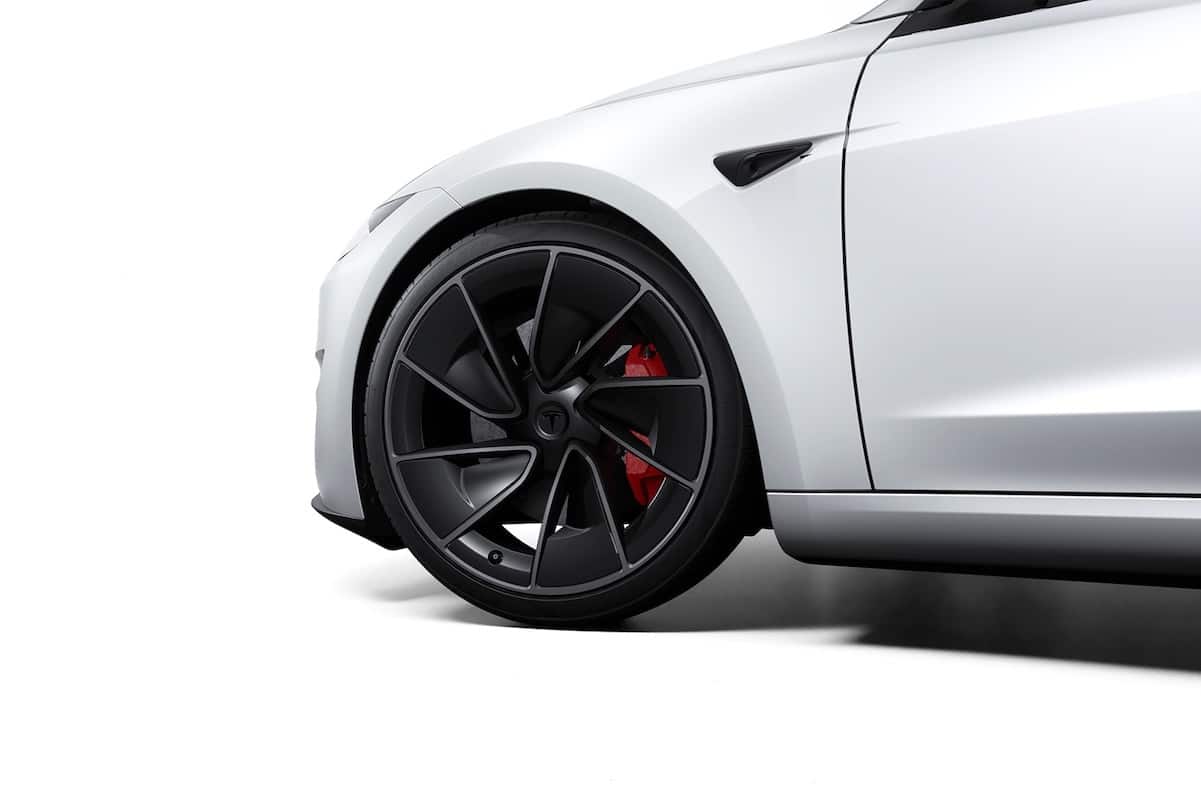Physics: We Know Why Large-Diameter Rims Reduce the Range of Electric Cars

Electric cars with large diameter wheels, but with a similar footprint, travel fewer kilometers.
A whole mystery surrounded the sharply declining range of electric cars depending on the size of their wheels. At a time when the fear of running out of battery remains central for new electric vehicle drivers, this divide between aesthetics and autonomy cannot be ignored. Because it is very real.
The question was even more pronounced as manufacturers no longer typically link an increase in diameter to an increase in width, which used to be the case. The most telling example particularly concerns Tesla, for whom the quest for range is at the heart of the design process. The footprint is thus minimized, without compromising safety.
Tesla Ranges Depending on Wheel Size
| 18-inch Wheels | 19-inch Wheels | 20-inch Wheels | 21-inch Wheels | Range | |
| Tesla Model 3 RWD | 554 km | 513 km | – | – | -7.50% |
| Tesla Model 3 Long Range AWD | 678 km | 629 km | – | – | -7.30% |
| Tesla Model 3 Performance | – | – | 528 km | – | – |
| Tesla Model Y RWD | – | 455 km | 430 km | – | -5.50% |
| Tesla Model Y Long Range RWD | – | 600 km | 565 km | – | -6.00% |
| Tesla Model Y Long Range AWD | – | 565 km | 533 km | – | -5.70% |
| Tesla Model Y Performance | – | – | – | 514 km | – |
The physical explanations are ultimately much more evident than one might have thought. The first concerns the increase in unsprung masses. Larger wheels are generally heavier than smaller wheels, especially when they are alloy or designed for a sporty look. This means that the vehicle must provide more energy to accelerate and brake them, which increases energy consumption and reduces overall vehicle efficiency. Conversely, one might have thought that this additional mass would increase regeneration during braking, but the balance remains unfavorable. Furthermore, large wheels increase the rotational inertia of the wheels, meaning the amount of energy required to spin the wheel.
A Degraded Aerodynamic Profile
Moreover, larger wheels and low-profile tires change the vehicle’s geometry and can increase aerodynamic drag, particularly due to the shape of the wheels themselves. Tesla pays particular attention to aerodynamics to maximize energy efficiency, and the original or aerodynamically optimized wheels are often more effective than larger diameter wheels that have a more open design.
The explanations continue. On the 18-inch wheels, the tires have a taller profile (45% of the width for the 235/45 R18 versus 40% for the 235/40 R19). A lower profile on the 19-inch wheels results in increased tire stiffness, slightly altering the distribution of ground pressure and the shape of the footprint. Although the width is the same, the length of the footprint can vary.
Beware of Comfort Too!
Another insidious effect is that a low-profile tire (like the 19-inch) is stiffer. This impacts ride comfort but can also increase rolling resistance despite a similar ground footprint in terms of surface area. A tire with a lower sidewall will deform less under load, but this can also harm energy efficiency, especially at high speeds.
Finally, the low-profile tires on the large diameter wheels may generate more heat under stress (especially during turns or repeated braking), which increases their rolling resistance as driving continues.
In summary, even if the tire width is the same, the differences in sidewall height, stiffness, aerodynamics, and weight lead to variations in efficiency and range depending on the diameter of the chosen wheels.
Ultimately, it comes down to choosing between appearance and range.
ALSO READ: In the United States, soaring inflation benefits the Tesla Model Y
This page is translated from the original post "Physique : on sait pourquoi les jantes de grand diamètre réduisent l’autonomie des voitures électriques" in French.
We also suggestthese articles:
Also read





